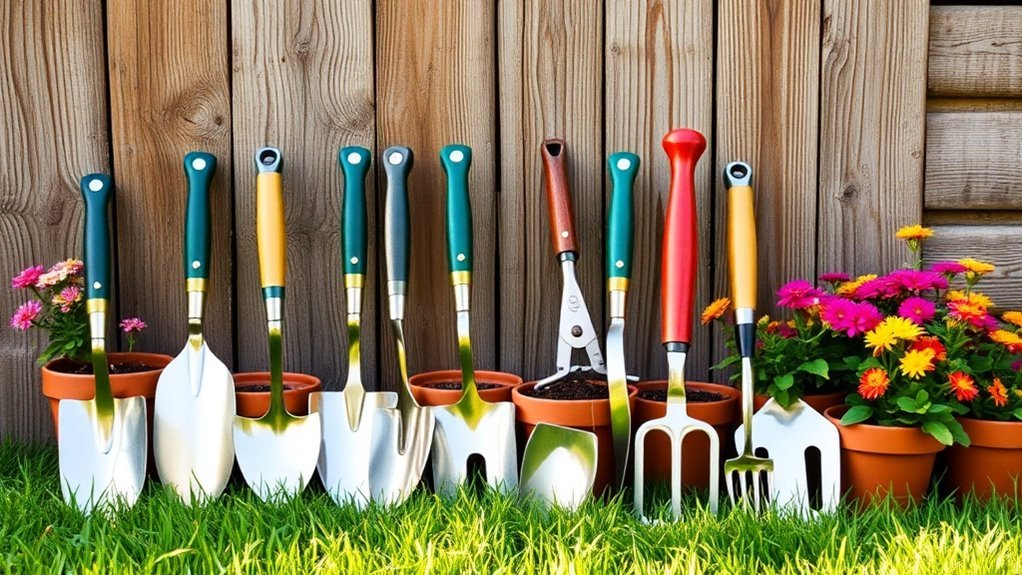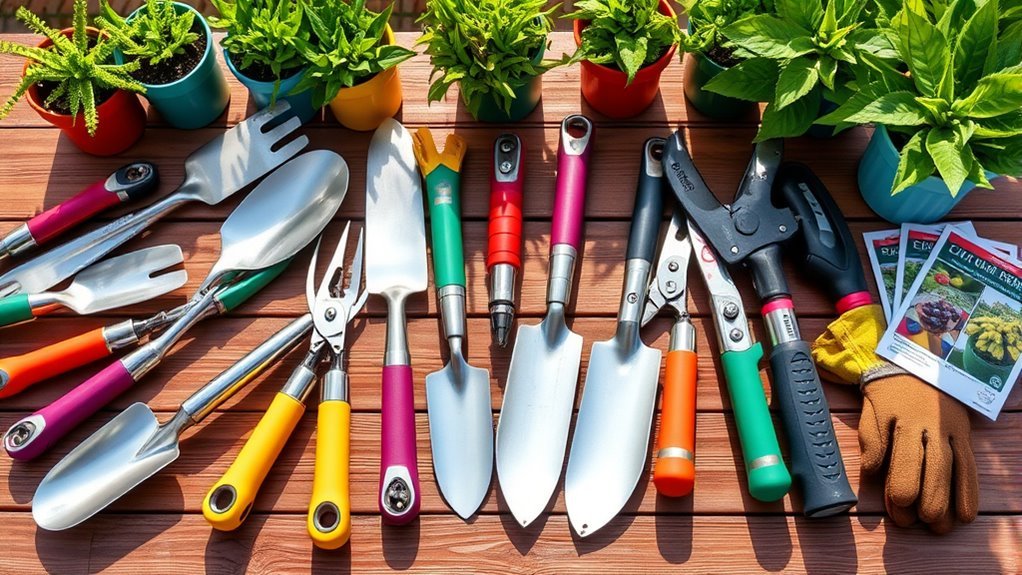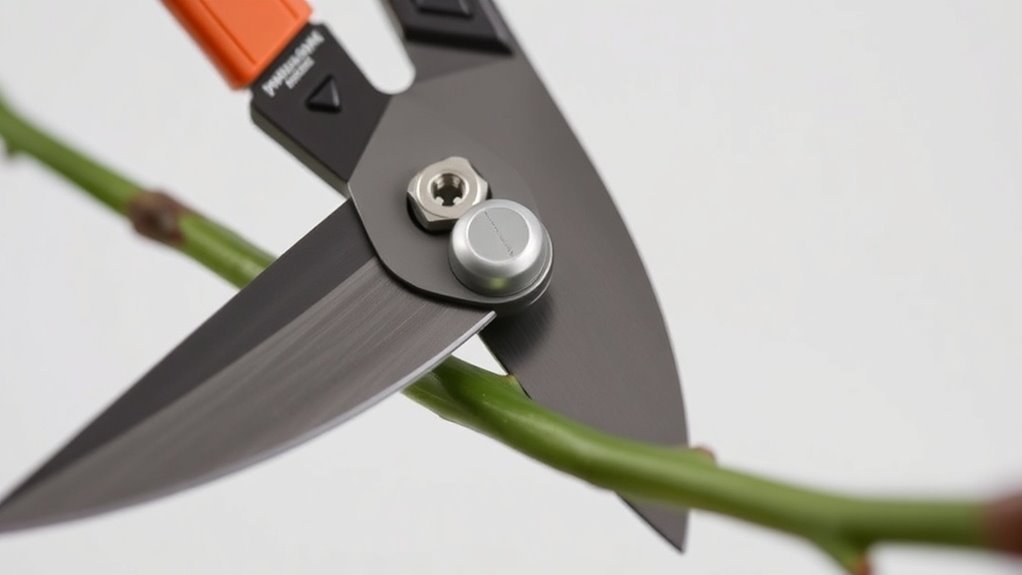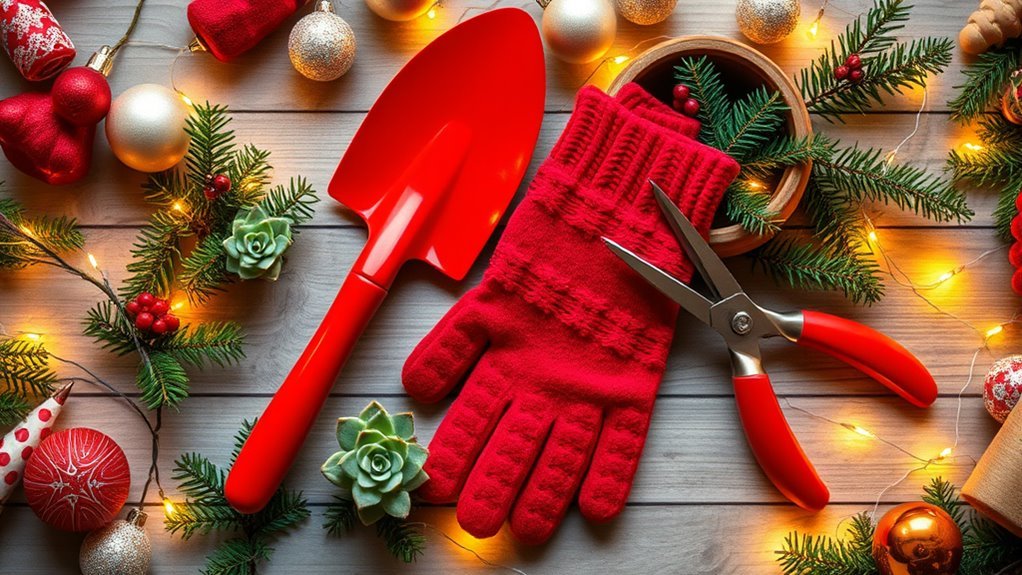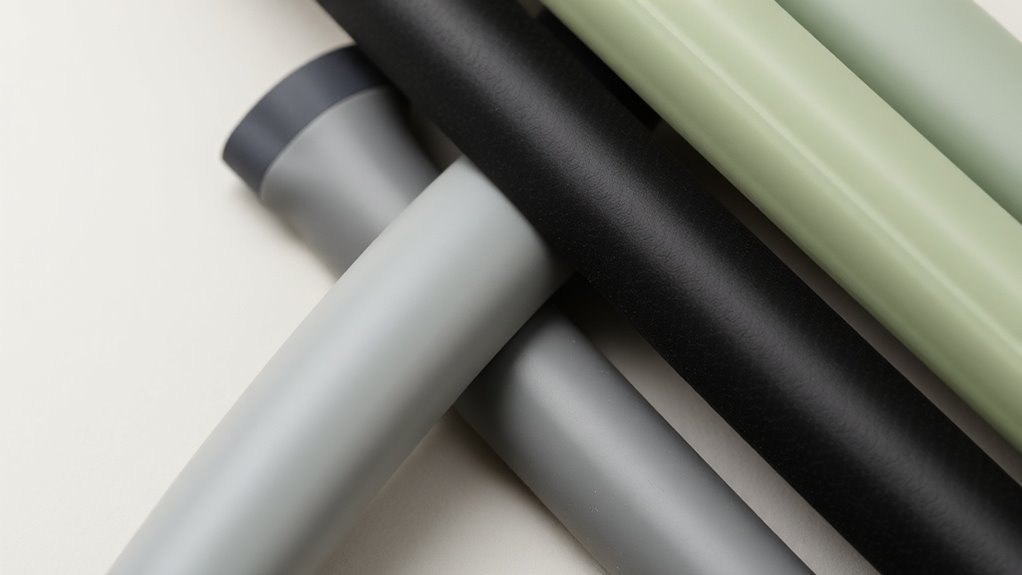Plant Health and the Role of Cutting Tools
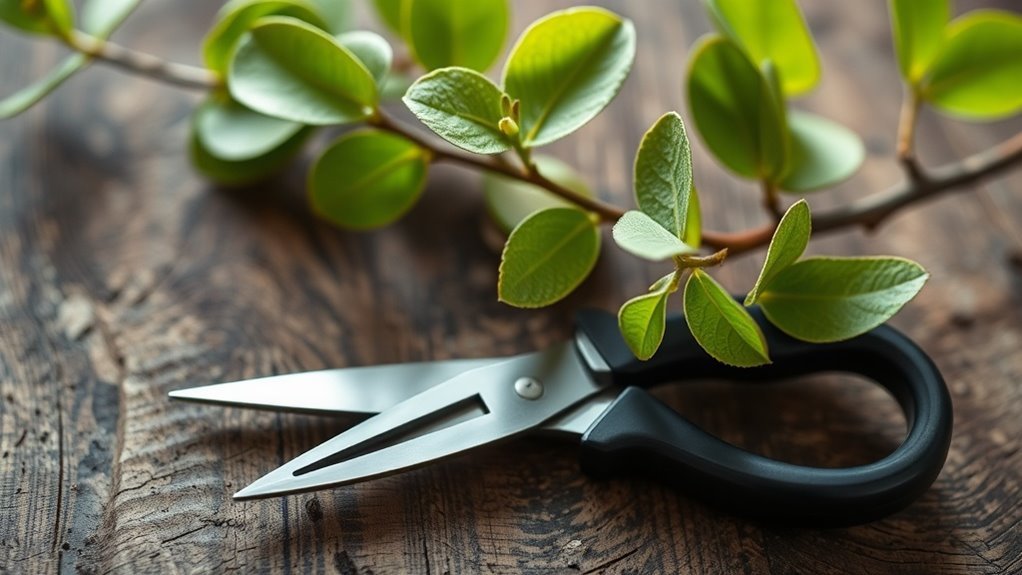
To keep your plants healthy, using the right cutting tools is essential. Sharp shears and pruners create clean cuts, helping to minimize damage and promote faster healing. Tools like loppers and specialized shears let you handle different plant needs effectively. Remember, clean cuts prevent pathogens and redirect energy for new growth. By mastering pruning techniques and maintaining your tools, you can greatly enhance plant vitality. Discover more tips for ideal pruning and tool selection.
Key Takeaways
- Sharp, high-quality cutting tools ensure clean cuts, reducing damage to plant tissues and promoting faster healing.
- Pruning techniques like removing dead or damaged branches improve plant health and growth by directing energy effectively.
- Utilizing specialized tools for different plants enhances cutting precision and minimizes the risk of damaging stems.
- Routine maintenance, including cleaning and sharpening tools, is essential to maintain their effectiveness and prolong their lifespan.
- Proper timing of pruning, especially in late winter or early spring, supports optimal plant health and encourages robust new growth.
Essential Cutting Tools for Gardeners
When you immerse yourself in gardening, having the right cutting tools can make all the difference in your plant care routine. Sharp, precise shears are essential for trimming stems and managing overgrown plants.
Pruning saws come in handy for thicker branches that your regular cutters can’t handle. Don’t forget about bypass pruners; they’re perfect for making clean cuts without crushing the plants.
A good pair of ergonomic pruning gloves protects your hands while you work, while a garden knife can assist with tougher jobs like dividing perennials. Understanding the mechanisms of pruning tools can significantly enhance your cutting efficiency and plant health.
Quality tools not only improve your efficiency but can also enhance the overall health of your plants. Invest in durable options to guarantee you’re prepared for any gardening challenge that comes your way.
The Importance of Clean Cuts
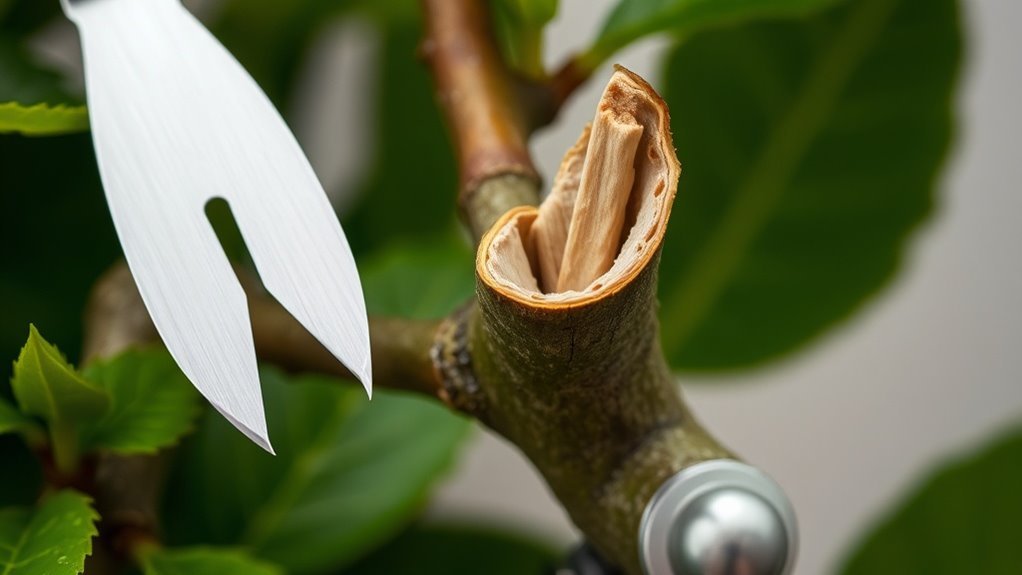
Clean cuts are vital in gardening, as they promote healthier plants and reduce the risk of disease.
When you make a clean cut, you minimize damage to the plant’s tissues, allowing it to heal faster. Rough cuts can create jagged edges that invite pathogens, leading to potential infections.
Making clean cuts minimizes tissue damage, promoting faster healing and reducing the risk of infections from jagged edges.
It’s important to use sharp, high-quality tools to guarantee precision; otherwise, you’ll end up tearing the plant rather than cutting it. This tear can impede its natural healing process, leaving your plants vulnerable.
Additionally, clean cuts help direct the plant’s energy into growth rather than recovery from injury. Regularly sharpening your tools ensures optimal gardening performance and maintains the effectiveness of your clean cuts.
Pruning Techniques for Optimal Plant Health
Pruning is essential for maintaining ideal plant health, and employing the right techniques can make all the difference.
Start by evaluating your plants’ structure. Remove dead or diseased branches first, as this promotes health and prevents the spread of infections. Use the “three D’s” method—cut out dead, damaged, and dying wood.
Next, focus on thinning out crowded areas to improve air circulation and light penetration. This helps the remaining branches thrive.
Remember to prune during appropriate seasons; for most plants, late winter or early spring is ideal.
Finally, always cut at an angle just above a node to encourage new growth. Utilizing essential tools for pruning can significantly enhance your efficiency and the overall health of your garden.
Specialized Tools for Specific Plants
While understanding pruning techniques is important, having the right tools tailored to specific plants can greatly enhance your results.
For instance, if you’re working with delicate perennials, a pair of precision snips can help you avoid damaging tender stems. Conversely, when dealing with thick, woody shrubs, a lopper provides the leverage needed for clean cuts.
When pruning delicate perennials, precision snips are essential; for woody shrubs, a lopper ensures clean, effortless cuts.
If you’re tending to roses, specialized rose pruning shears can make a significant difference in your technique, ensuring you can reach those awkward spots without hassle. Additionally, a cordless hedge trimmer can save time when shaping larger hedges.
Investing in these specialized tools not only boosts your efficiency but also promotes the overall health of your plants, leading to a more vibrant garden.
Maintenance and Care of Cutting Tools
Maintaining your cutting tools is essential for keeping your garden thriving, and it doesn’t have to be a time-consuming chore.
Start by cleaning your tools after each use to remove sap, dirt, and debris. A simple wipe down with a rag and a mild detergent does wonders.
Next, inspect blades for dullness; if they’re not cutting cleanly, sharpen them using a sharpening stone or file.
Don’t forget to oil the moving parts to prevent rust and guarantee smooth operation.
Finally, store your tools in a dry place, preferably hanging, to keep them organized and in top shape. Be mindful that extreme weather conditions can accelerate wear and tear, so take extra precautions during harsh seasons.
With just a little effort, you’ll prolong the life of your cutting tools and promote healthier plants.
Happy gardening!
Questions
How Often Should I Sharpen My Cutting Tools?
You should sharpen your cutting tools regularly—typically every few uses or at least once per season. If you notice decreased performance or struggle to cut smoothly, it’s definitely time to sharpen them.
Can I Use Household Scissors for Gardening Tasks?
You can use household scissors for gardening tasks, but they’ll dull quickly and may struggle with tougher stems. While they’re convenient, investing in dedicated gardening shears can enhance efficiency and protect your plants better.
What Are the Signs of Plant Stress After Cutting?
You might notice wilting leaves, yellowing foliage, or stunted growth after cutting. If your plant droops or shows brown tips, it’s stressed. Keep an eye on it, and adjust care to help it recover.
Should I Disinfect Tools Between Cutting Different Plant Types?
Yes, you should disinfect tools between cutting different plant types. This helps prevent disease transmission and guarantees healthier plants. It’s a simple step that can make a big difference in your gardening success.
When Is the Best Time to Prune My Plants?
The best time to prune your plants is generally during their dormant season, usually late winter or early spring. This helps promote healthy growth when they begin to bloom and recover from pruning.
Conclusion
In the grand tapestry of gardening, your cutting tools are the weavers, shaping the health and essence of your plants. By mastering clean cuts and utilizing the right techniques, you’re not just pruning; you’re nurturing life, much like a skilled artist refining their masterpiece. So, as you tend to your tools, remember that each snip echoes the wisdom of ancient horticulturists, guiding your green endeavors towards flourishing growth and boundless beauty. Your garden is a reflection of your care.

